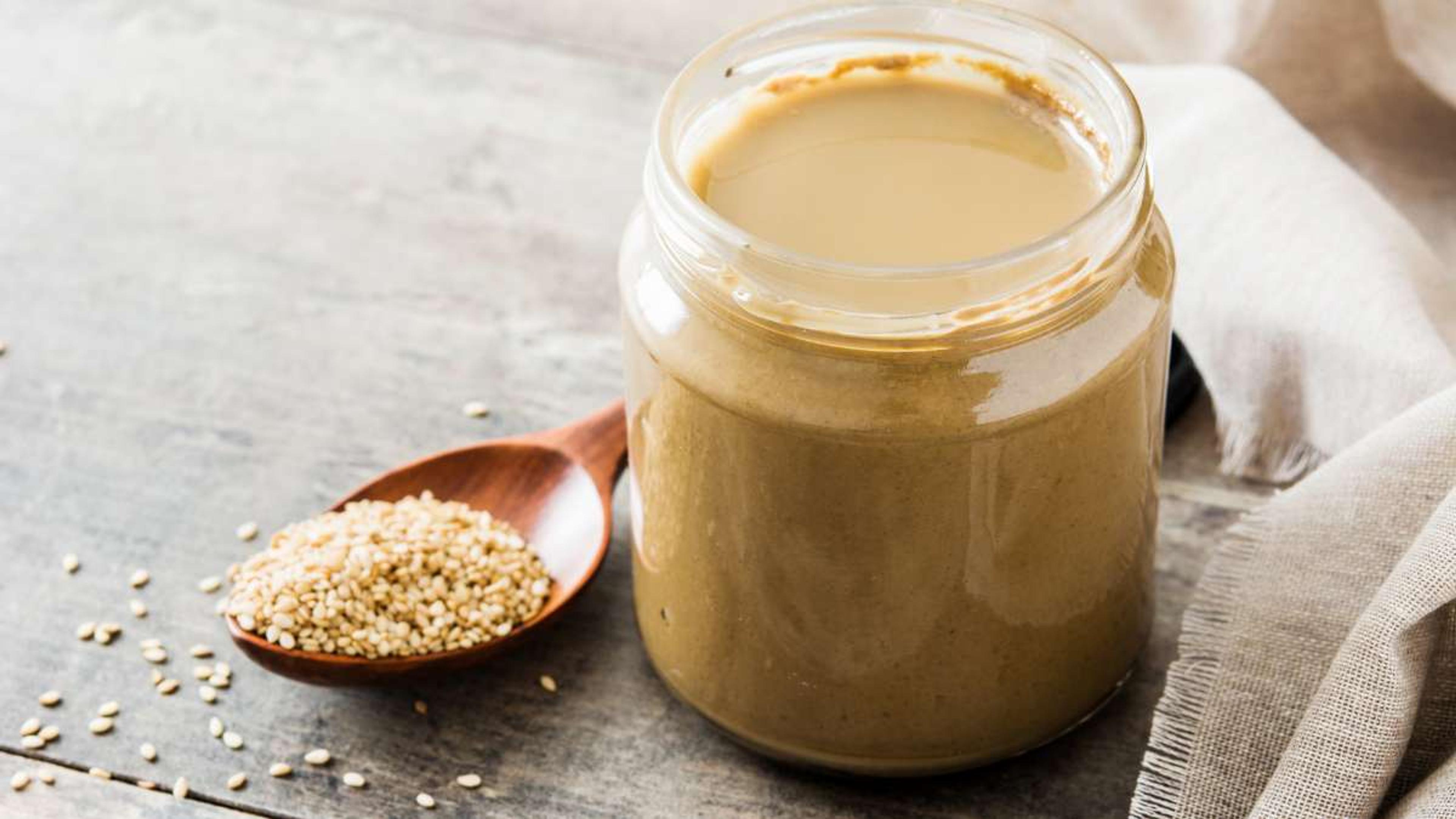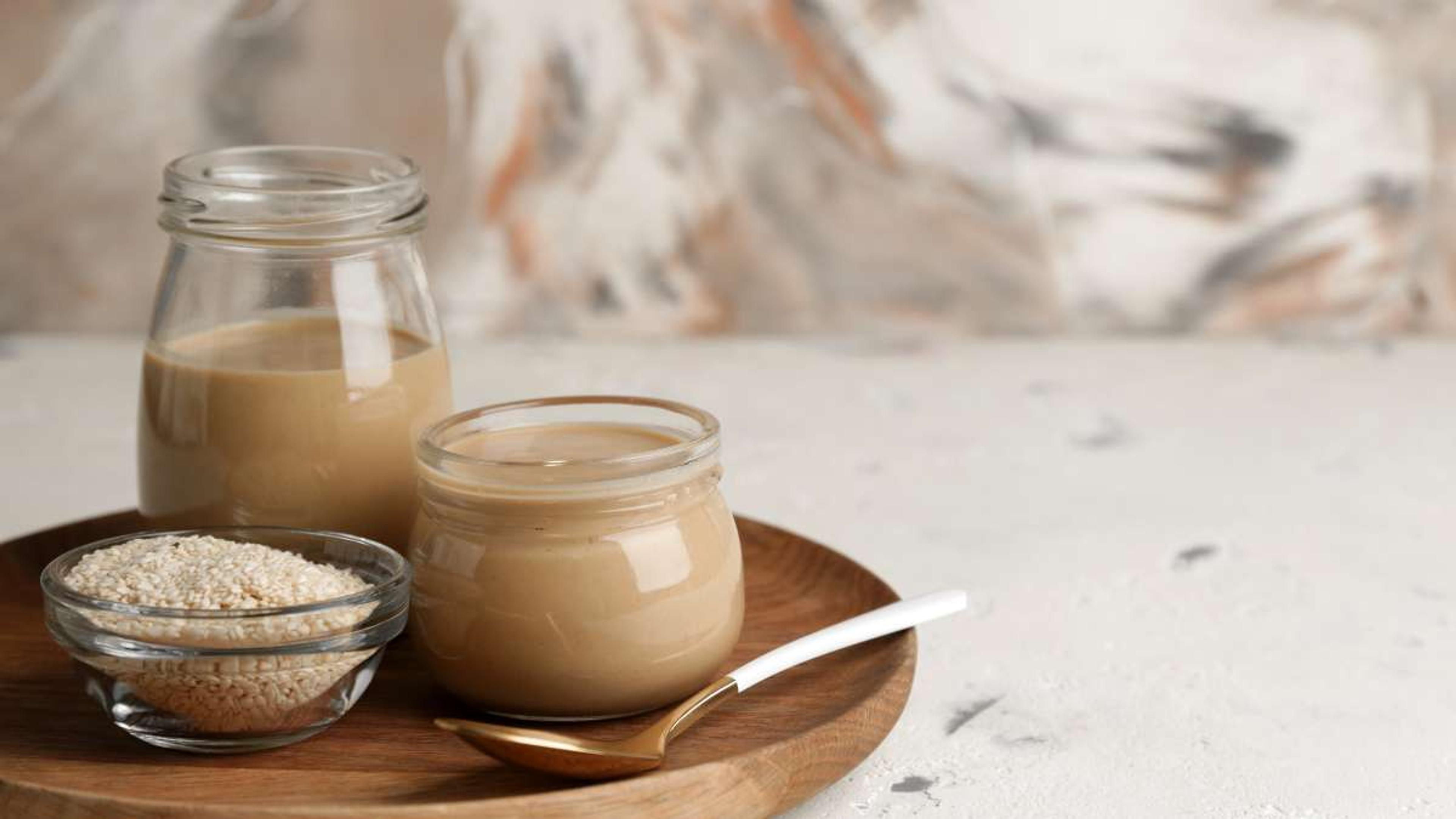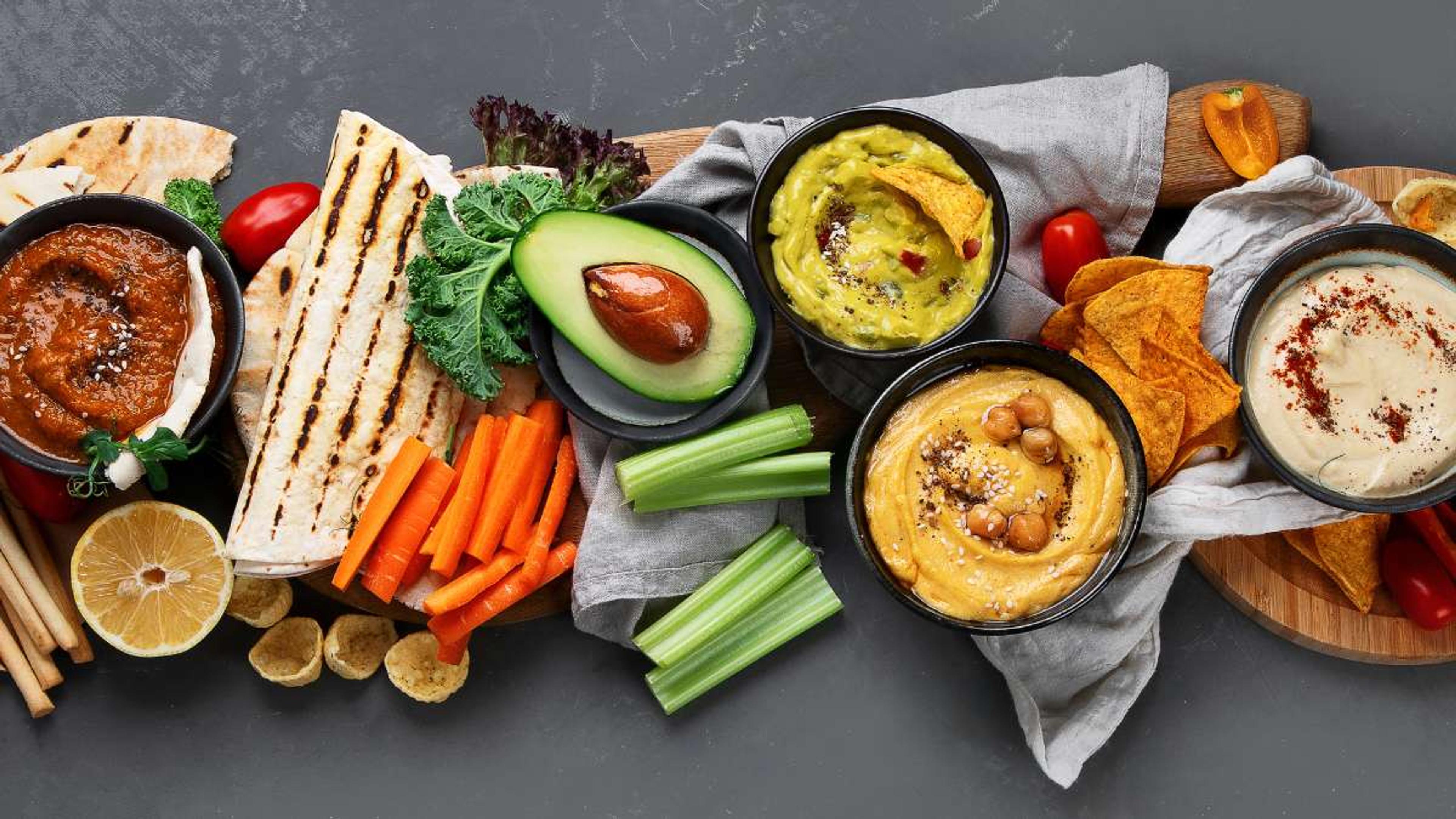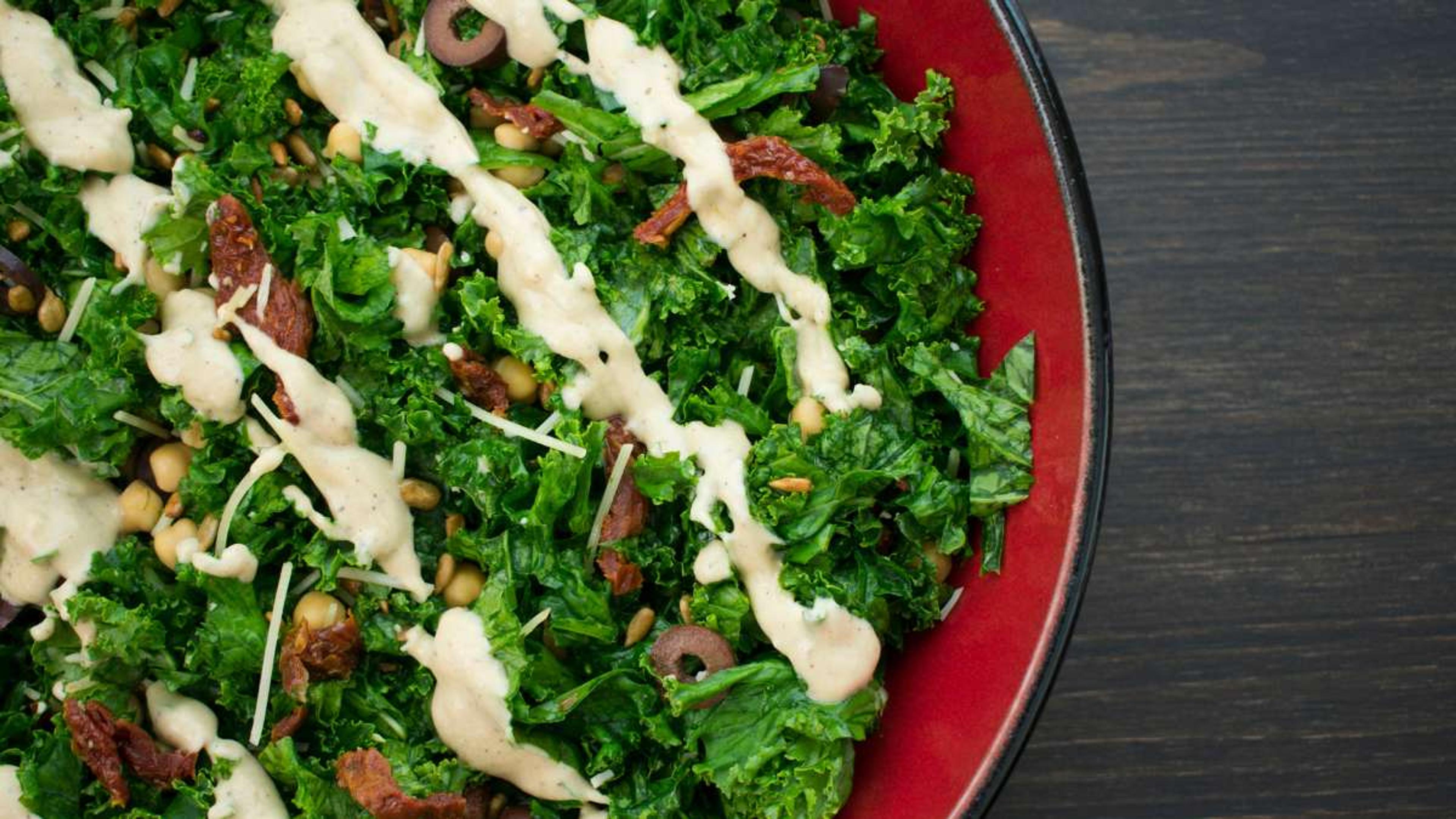Is Tahini Vegan? Your Definitive Answer Here

- Key Takeaways
- Brief overview of tahini and its origins
- Common uses of tahini in various cuisines
- Is Tahini Vegan?
- Benefits of Tahini in a Vegan Diet
- Popular Vegan Recipes Using Tahini
- Potential Concerns and Considerations
- Conclusion
- FAQs
Are you a vegan wondering if tahini is a suitable addition to your plant-based diet? Look no further! Tahini, made from sesame seeds, is a naturally vegan product that offers numerous health benefits. In this article, we'll explore the question of whether tahini is vegan and delve into its nutritional profile.
Get ready to discover delicious vegan tahini recipes featuring this versatile ingredient - you won't want to miss it!
Key Takeaways
- Tahini is a vegan food made from ground sesame seeds and does not contain any animal ingredients or additives.
- It is produced using vegan-friendly methods, such as cleaning, roasting, and grinding sesame seeds into a paste.
- Tahini is rich in healthy fats, vitamins, minerals like calcium and iron, making it a valuable addition to a vegan diet.
- Popular vegan recipes that use tahini include hummus, tahini dressing, and vegan tahini cookies.
Brief overview of tahini and its origins
Tahini is a tasty food paste. It comes from ground sesame seeds. This food has been made for many years. Its roots are in the Middle East, in a place called Persia. People there named it "ardeh".
Now, it's part of meals in many parts of the world. The best sesame seeds for tahini come from Ethiopia and are Humera seeds. You can find tahini in lots of dishes, like sauces and dressings.
Common uses of tahini in various cuisines
Tahini finds its way into many dishes across the globe, including Mediterranean cuisine. You'll find it in hummus, a well-known Middle Eastern dip. It's also in falafel and baba ghanoush. Tahini adds flavor to grilled veggies or meats too.
Use this nutty paste as a base for dressings, marinades, and dips! Mix it with yogurt or lemon juice for a creamy salad dressing sauce or drizzle over roasted vegetables. For vegans and vegetarians, tahini acts like eggs or dairy to hold foods together in recipes.
Is Tahini Vegan?
Tahini is unquestionably vegan, making it an excellent choice for plant-based diets. Discover more about tahini's vegan-friendly production methods and clear up any misconceptions surrounding its ingredients.

Tahini is naturally vegan
Tahini is a vegan food. It is made from ground sesame seeds and nothing else. There are no parts of animals in it, nor anything that comes from an animal. This makes tahini a good pick for people who eat only plant foods.
Being vegan means more than just not eating meat or dairy. It also means foods must be free of all things from animals, like honey or gelatin. Tahini passes this test with ease! So yes, tahini is naturally vegan!
Uses Vegan-friendly production methods
Tahini is made in a way that's good for vegans. First, they clean the sesame seeds. Next, they roast and grind them into a paste. That's all! There are no animal parts used. So, yes, you can eat homemade tahini if you follow a vegan diet!
Benefits of Tahini in a Vegan Diet
Tahini is a valuable addition to a vegan diet due to its rich nutritional profile, which includes healthy fats, vitamins, and minerals essential for overall well-being.

Nutritional profile
Tahini is a nutritious addition to a vegan diet because it is packed with healthy fats, vitamins, and minerals, with sesame seeds being the key ingredient. Just one tablespoon of tahini can provide over 10% of your daily value for important nutrients like calcium, iron, magnesium, and B vitamins.
It also contains essential fatty acids that are beneficial for heart health. With its nutty flavor and creamy texture, tahini can be used in various recipes to enhance both taste and nutrition.
So whether you're spreading it on toast or using it as a base for dressings and dips, tahini adds a nutritional boost to any vegan meal.
Role of tahini in providing essential nutrients
Tahini plays an important role in providing essential nutrients like calcium and iron. Calcium is crucial for strong bones and teeth, while iron helps transport oxygen throughout the body.
Tahini contains both of these nutrients, making it a valuable addition to a vegan diet. Just one serving of tahini can provide a significant amount of calcium and iron, helping vegans meet their nutritional needs without relying on animal-based foods.
So, whether you're spreading it on toast or using it as a dip for veggies, tahini is not only delicious but also packed with important minerals that your body needs.
Popular Vegan Recipes Using Tahini
Some popular vegan recipes using tahini include hummus, tahini dressing, and vegan tahini cookies.

1. Hummus: A classic Middle Eastern dip
Hummus is a popular vegan dip made from chickpeas and tahini. It is a creamy and smooth paste that is perfect for spreading on toast or dipping veggies into. Hummus pairs well with pita bread, carrot sticks, cucumber slices, or even used as a spread in sandwiches.
Here are some key facts about hummus:
- Made from cooked and mashed chickpeas blended with tahini, lemon juice, and spices.
- Traditional hummus made with chickpeas, lemon juice, salt, tahini, and garlic is vegan.
- Hummus is a staple in Middle Eastern cuisine and can be enjoyed as a snack or appetizer.
It is easy to make homemade hummus using a food processor or blender. For a creamy vegan tahini hummus, blend 1 can (15oz) of drained and rinsed chickpeas with 4 tablespoons of tahini, 1/4 cup of water (adding an extra 2 tablespoons as needed), 1-2 garlic cloves or 1 teaspoon of garlic powder, juice of 1 or 2 lemons, 1/2 teaspoon of cumin, and a generous pinch of Himalayan salt. Adjust the consistency with water and taste for flavor, adding more lemon, garlic, or salt as desired. Garnish with toppings like chickpeas, sesame seeds, parsley, olive oil, and smoked paprika. Store in an airtight container in the fridge for up to a week.
Hummus can be customized by adding additional ingredients like roasted red peppers or olives for different flavors.
2. Tahini dressing: A versatile sauce for salads and bowls
Tahini dressing is a creamy and tangy sauce that can be used for salads and bowls. It is made from tahini, a paste with a smooth texture made from ground sesame seeds. The dressing adds flavor to dishes with its lemony and garlic taste. It is gluten-free, vegan, and oil-free, making it suitable for those with dietary restrictions. You can easily make tahini dressing at home using ingredients like toasted sesame seeds, olive oil, lemon, and garlic.
For a creamy and rich vegan tahini dressing, mix 1/3 cup of tahini with the juice of 1 medium lemon and 1-2 tablespoons of maple syrup. Add a pinch of sea salt and minced garlic for enhanced flavor, though these are optional. Whisk the ingredients together, gradually adding water (about 3-6 tablespoons) until the dressing reaches a pourable consistency. Adjust the flavor by adding more lemon juice, salt, or maple syrup as needed. This versatile dressing is perfect for salads, falafel, sandwiches, and more. Store any leftovers in the refrigerator for up to 5 days.
3. Vegan tahini cookies: A delicious and healthy treat
Vegan tahini cookies are a tasty and nutritious treat that you can enjoy. These cookies are made with vegan-friendly ingredients, including tahini, which is a paste made from sesame seeds. They can be made gluten-free, nut-free, and refined sugar-free, making them suitable for various dietary preferences.
All you have to do is whisk together 1/2 cup of smooth tahini and 1/2 cup maple syrup in a bowl. Add 1 ¼ cup almond flour, 3/4 cup tapioca starch, 1/2 tsp each of baking soda and a pinch of salt, and mix until combined. Roll the dough into balls, coat with raw sesame seeds, and place on a parchment-lined baking sheet. Flatten each ball slightly and bake at 350 F (176 C) for 12-15 minutes until golden. Allow to cool briefly before serving. Enjoy these nutty, vegan delights!
Potential Concerns and Considerations
Ensure that the tahini you choose is pure and free from any non-vegan ingredients or additives by reading labels and opting for certified vegan products.

Ensuring the purity of tahini: Some brands might add non-vegan ingredients or additives
To make sure that tahini is vegan, it's important to check the ingredients list. Some brands of tahini might contain non-vegan additives or ingredients like milk powder. Reading labels and choosing certified vegan products can help ensure the purity of tahini.
By doing so, vegans can enjoy this delicious and versatile ingredient without any concerns about animal-based ingredients.
Importance of reading labels and choosing certified vegan products
When following a vegan lifestyle, it is crucial to carefully read labels and choose certified vegan products. This helps ensure that the items we consume align with our ethical standards and do not contain any animal-based ingredients.
By reading labels, we can identify potential non-vegan additives or hidden animal-derived components. Certified vegan labels make it easier for us to quickly identify products that meet our ethical criteria and avoid those that do not align with our values.
Taking the time to understand vegan labeling requirements empowers us to make informed choices about the food and other products we purchase.
Conclusion
In conclusion, tahini is indeed vegan, as it is made solely from sesame seeds and oil. It does not contain any animal ingredients or additives. Tahini is a versatile and nutritious ingredient that can enhance the flavor of vegan dishes while providing essential nutrients.
So if you're following a vegan diet, don't hesitate to enjoy the creamy goodness of tahini in your meals!
FAQs
1. Is tahini vegan?
Yes, tahini is vegan as it is made solely from ground sesame seeds without any animal products or by-products.
2. Can I use tahini in vegan recipes?
Absolutely! Tahini is a common ingredient in many vegan recipes and can be used as a dressing, dip, or even as an addition to baked goods.
3. Are there any potential non-vegan ingredients in tahini?
When purchasing tahini, it's important to check the label for any added ingredients such as honey or other sweeteners that could make it non-vegan. Pure and unadulterated tahini is typically vegan-friendly.
4. What are some ways to incorporate tahini into a vegan diet?
Tahini can be enjoyed in various ways on a vegan diet including using it as a sauce for salads or roasted vegetables, blending it into smoothies, spreading it on toast or crackers, or adding it to homemade hummus for extra creaminess.

